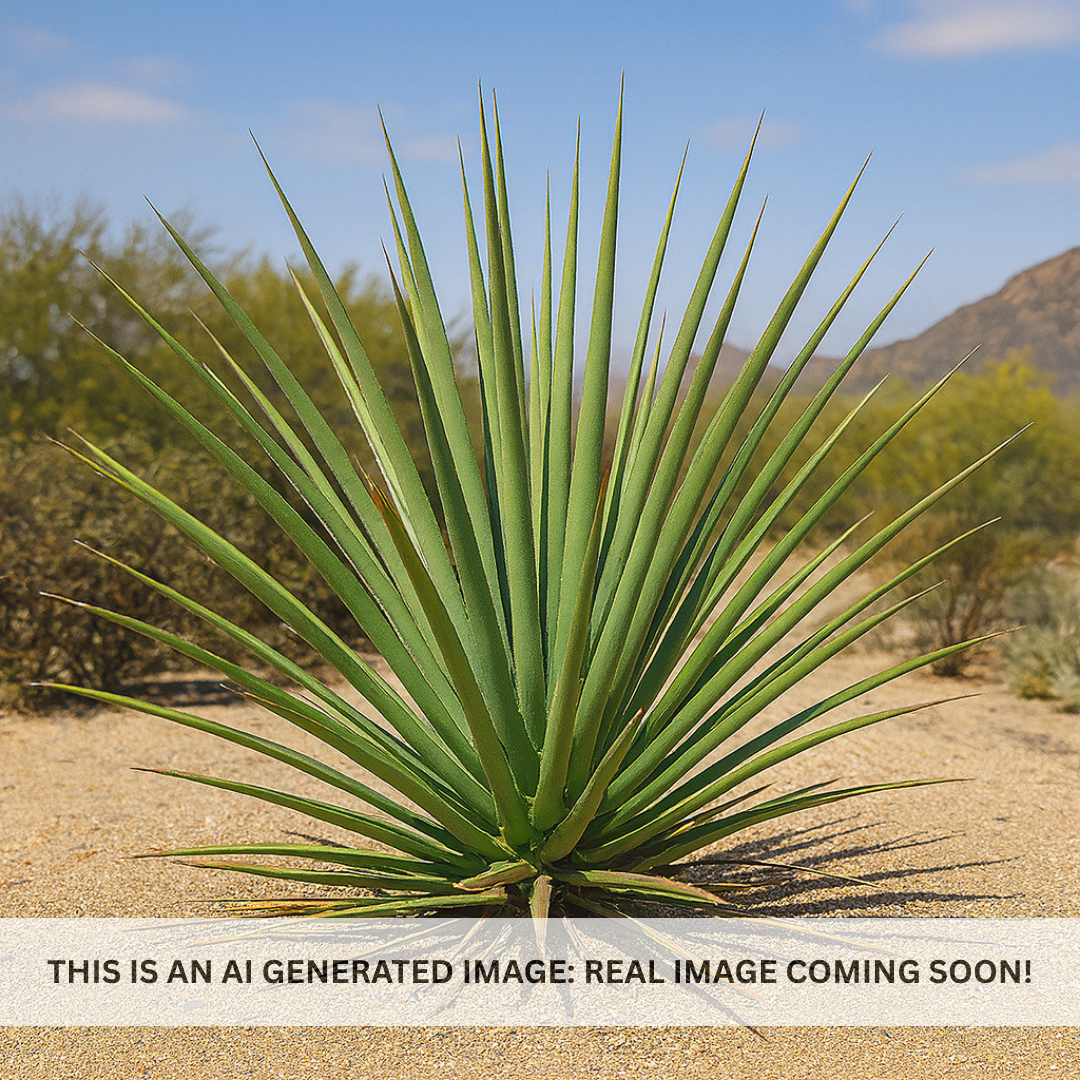My Store
Furcraea macdougalii
Furcraea macdougalii
Couldn't load pickup availability
Plant Type: perennial, succulent (tree-forming rosette)
Plant Height: 8–12 feet (flower spike up to 25–30 feet)
Spread: 6–8 feet
Flower Color: creamy white to greenish-white
Sun Exposure: Full sun
Furcraea macdougalii: The Giant Sword of the Desert — A Bold Architectural Statement Plant
Furcraea macdougalii, often referred to as the Giant Furcraea, is one of the most spectacular architectural succulents available for desert landscapes. Native to the arid mountain regions of Mexico, this dramatic species forms massive, upright rosettes of long, narrow, sword-like leaves that radiate with perfect symmetry. Its commanding presence, elegant structure, and ability to withstand the toughest desert conditions make it an ideal specimen plant for Arizona landscapes, where its silhouette rivals that of agaves and yuccas for visual impact.
Key Features of Furcraea macdougalii
This species forms a single, large rosette of stiff, lance-shaped leaves that can exceed 8 feet in length. The leaves are a striking blue-green to silver-green, smooth-edged (without sharp teeth), and end in a single pointed tip. When mature—often after several years—it sends up a towering flower stalk that can reach 25 to 30 feet high, covered in clusters of creamy white, bell-shaped flowers. Following flowering, the mother plant typically dies, but it produces numerous bulbils and offsets that ensure continuity. The tall, upright leaves create an elegant, sword-like form that reads as both powerful and graceful, making Furcraea macdougalii a living sculpture in the desert landscape.
Growing and Care Tips
Furcraea macdougalii thrives in full sun and requires sharply draining soil, such as sandy or decomposed granite mixes. It excels in both ground plantings and large containers. In Arizona’s desert conditions, it performs best with morning and midday sun exposure and some protection from extreme afternoon heat during its first summer. Once established, it is extremely drought-tolerant, requiring minimal supplemental irrigation. Overwatering should be avoided—this plant prefers dry conditions and can suffer from root rot in poorly drained soils. It is hardy to around 28°F; brief dips below freezing can cause minor leaf burn, but established plants typically recover well.
Landscaping Uses
Furcraea macdougalii is a show-stopping focal plant ideal for high-impact landscape design. Its tall, slender leaves and bold structure make it perfect for modern, minimalist, or resort-style landscapes. It pairs beautifully with plants that offer contrasting textures, such as Blue Glow Agave, Ocotillo, or Mexican Feather Grass. When used near boulders or against simple backdrops like stucco walls or metal structures, its dramatic silhouette creates a powerful architectural statement. In large containers or entryways, it provides vertical drama and balance without the maintenance demands of traditional tropical plants.
Summary
Furcraea macdougalii is a masterpiece of form and endurance—tall, symmetrical, and nearly indestructible once established. Its sword-like leaves, drought tolerance, and monumental flower stalk make it a defining element in Arizona landscapes. Perfect for designers and homeowners seeking a sculptural focal point, this species brings elegance, strength, and permanence to desert architecture.
Three Timbers Installation Guide (Feel Free to Follow):
Furcraea macdougalii Planting Guide:
Location: Full sun; ideal placement provides open exposure and excellent airflow. Ensure at least 6–8 hours of sunlight daily for strongest growth and leaf coloration.
Soil: Use a sharply draining cactus or succulent mix blended with sand, decomposed granite, or pumice. Avoid compacted or clay soils that retain water.
Spacing: Allow 8–10 feet between plants or structures to accommodate mature spread and highlight its full rosette form.
Planting Depth: Keep the crown level with the soil surface; never bury the base of the leaves.
Support: Not required; the rosette structure provides natural stability as it grows.
Watering Guide:
Watering After Planting: Water deeply once after installation to settle the soil. Then allow the soil to dry completely before watering again. During the first 2–3 months, water every 14–20 days depending on temperature and drainage.
When is the Plant Established? Furcraea macdougalii is considered established after 9–12 months, once new central leaves emerge consistently and the rosette becomes full and rigid.
Watering Once Established: Water sparingly—typically every 4–6 weeks in summer if no rainfall occurs. In winter, water only during prolonged dry periods.
Drip Irrigation Setup: Place one low-flow emitter (0.5–1 gallon per hour) about 10–12 inches from the base, angled outward to encourage lateral root spread. Allow full drying between watering cycles.
General Watering Tips: Always ensure soil is completely dry before watering again. Overwatering can lead to root rot or crown collapse. Use decorative gravel or decomposed granite mulch to reflect heat and enhance aesthetics, but keep it a few inches from the base for airflow and longevity.
Share












